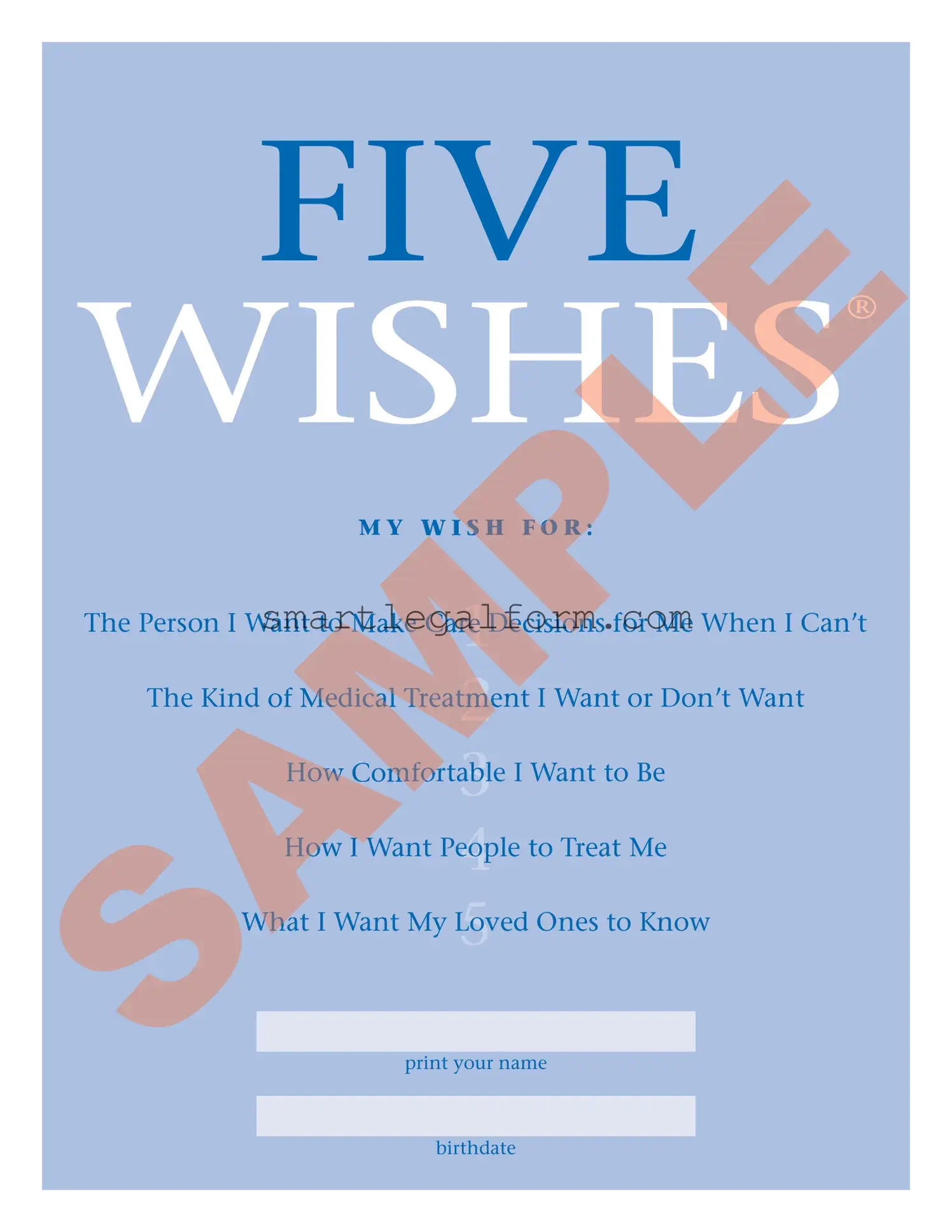The Five Wishes document is a valuable tool for individuals to express their healthcare preferences in the event they cannot make decisions for themselves. However, many people make mistakes when filling out this form, which can lead to confusion or unintended consequences. Understanding these common errors can help ensure that the document accurately reflects one’s wishes.
One frequent mistake is failing to clearly identify the health care agent. The form requires individuals to specify a primary agent and, if necessary, alternative choices. Omitting this information or not providing complete contact details can result in delays or disputes about who should make decisions on behalf of the individual. It is crucial to ensure that the selected agent is someone who understands the individual’s values and wishes.
Another common error involves not discussing the wishes with the chosen health care agent. People often assume that their agent knows their preferences without having a detailed conversation. This can lead to misunderstandings during critical moments. It is essential for individuals to communicate their desires regarding medical treatment, comfort, and overall care to their agents to avoid any ambiguity.
In addition, individuals may neglect to update the Five Wishes document when their circumstances change. Life events such as divorce, the death of a chosen agent, or changes in personal relationships can impact who should make healthcare decisions. Failing to revise the document can leave outdated information that does not reflect current wishes, potentially leading to conflicts or confusion.
Some people also make the mistake of not signing the document correctly. The Five Wishes form must be signed and dated to be valid. In some states, witnessing or notarization may also be required. Not adhering to these legal requirements can render the document ineffective, meaning that the individual’s wishes may not be honored.
Another error is being vague about medical treatment preferences. The Five Wishes document allows individuals to specify what types of medical treatments they want or do not want. However, some people provide ambiguous answers or fail to address certain scenarios. Clear and specific instructions can help healthcare providers understand and respect the individual’s wishes during critical situations.
Moreover, individuals sometimes overlook the importance of including specific instructions for comfort and how they wish to be treated. This aspect of the Five Wishes document is designed to address emotional and spiritual needs, which are just as important as medical preferences. Neglecting to articulate these wishes can lead to a lack of holistic care, leaving family members and healthcare providers unsure of how to proceed.
Another mistake is not informing family members about the existence of the Five Wishes document. Even if the document is filled out correctly, if family members are unaware of its existence, they may not know to consult it during healthcare decisions. Sharing this information with loved ones ensures that everyone is on the same page and can honor the individual’s wishes effectively.
Lastly, individuals may fail to review and revise the document periodically. As life circumstances evolve, so too may healthcare preferences. Regularly reviewing the Five Wishes document ensures that it remains aligned with current values and desires. This practice can prevent complications and ensure that the document serves its intended purpose.











